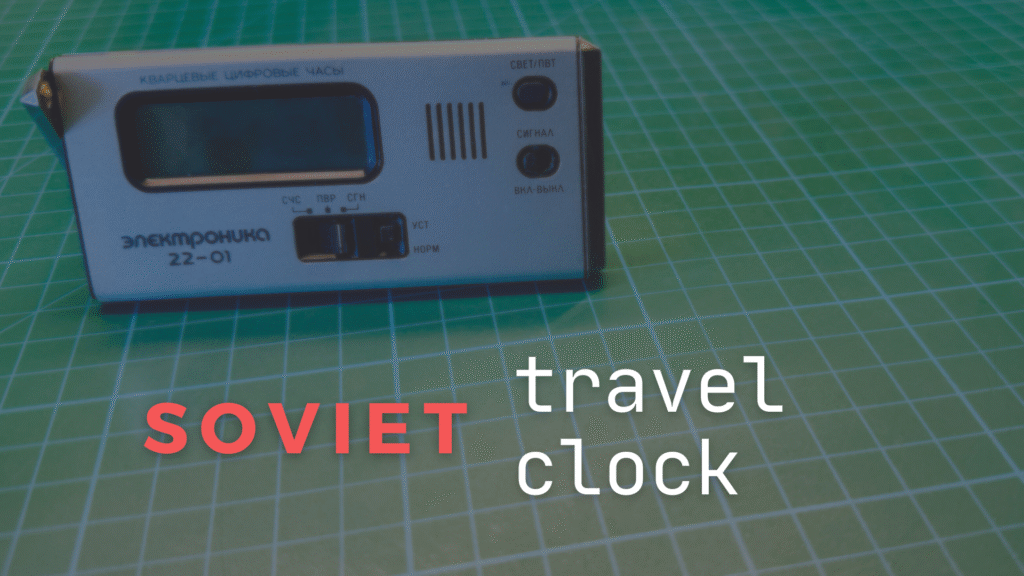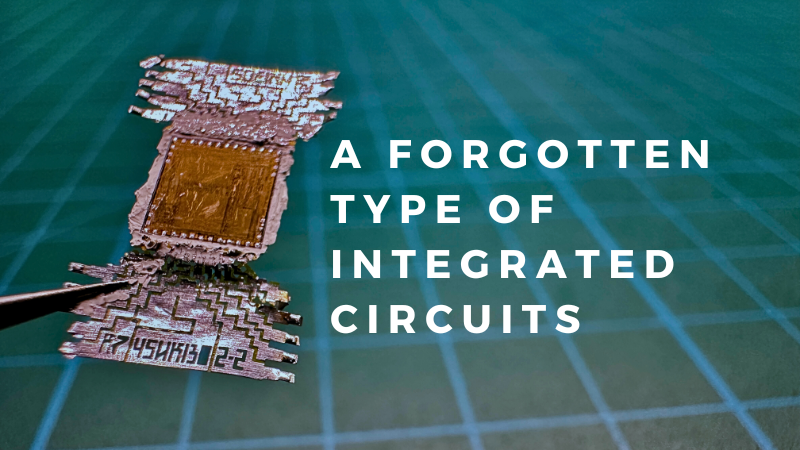Today, few people remember such a thing as travel watches anymore, although those in the days before the spread of cell phones were readily used. One such device was the Soviet design Электроника 22-01 (Elektornika 22-10), which we will take a closer look at in this article.
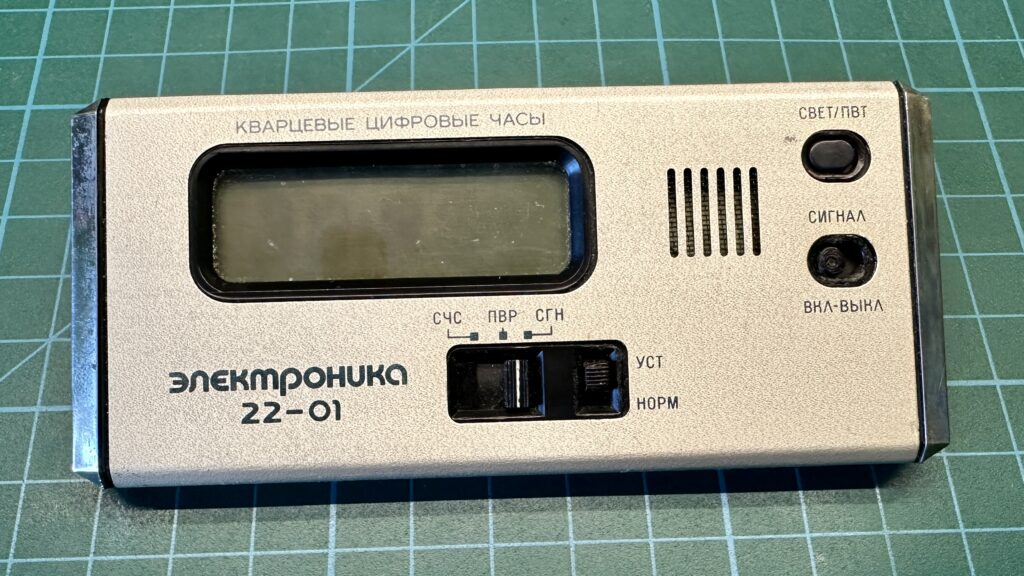
The device is quite small and by its size resembles a slightly elongated and thicker credit card. The body is made of metal, finished on two sides with chrome-plated plastic. One of the ends is movable, so the watch can be placed on a flat surface. Most of the front panel is, of course, occupied by a four-digit LCD display, whose job it was to indicate the time, and interestingly it is backlit. Above it there was also a proud inscription “quartz digital clock”, which reveals to us how this equipment works. Below the display we find the model designation and two switches. The first one moving horizontally is used to change functions between the time indicator, alarm clock and second hand. On the other hand, the switch that changes its position vertically allows activating the time setting mode. A buzzer bezel, a button activating the display’s backlight, and a switch activating the alarm clock are placed on the left side.
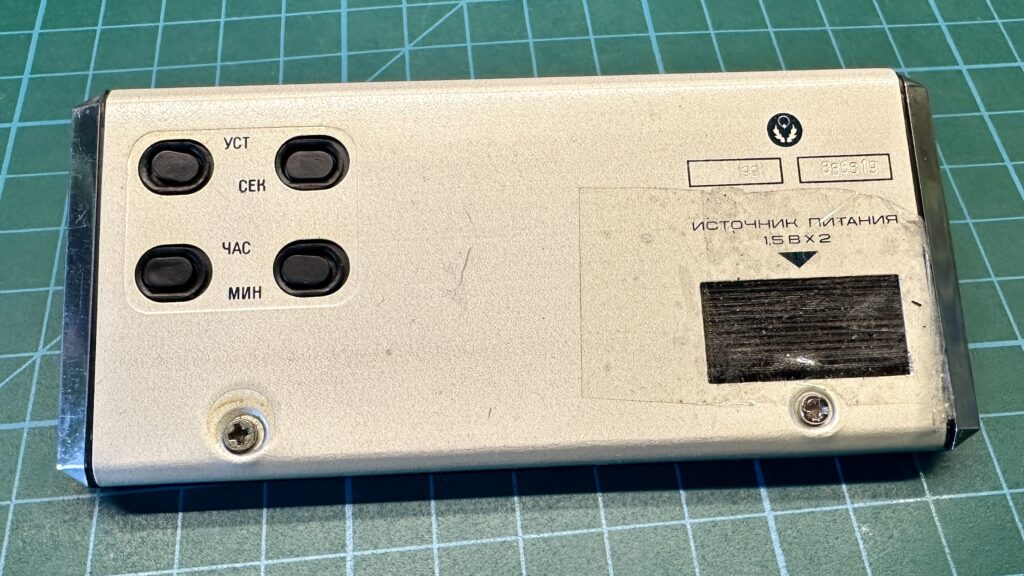
On the other side of the case, four buttons were placed to help set the time. Here we can also see a plastic flap, under which two flat batteries were placed to power the whole structure. As you can see, the clock case is screwed together with two screws, one of which is barely held in place. However, interestingly, this seems to have no effect on the overall assembly, perhaps there are also additional latches inside.
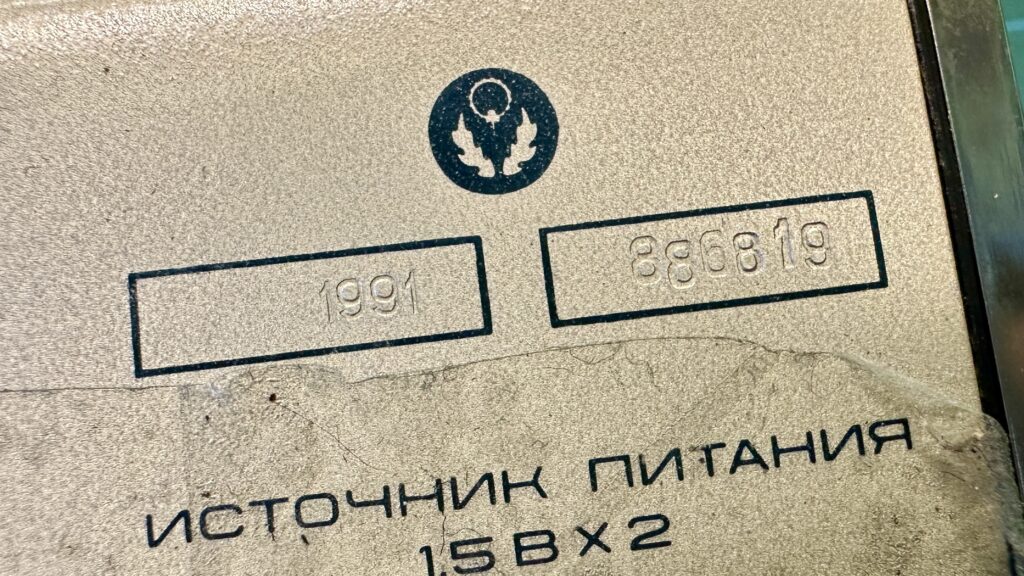
As you can see in the close-up, the clock was produced in 1991, although from the information I found they were produced as early as 1986, along with an indication that even older copies can be found. Here, too, right next to the stamped year, you’ll find the serial number.
Two versions
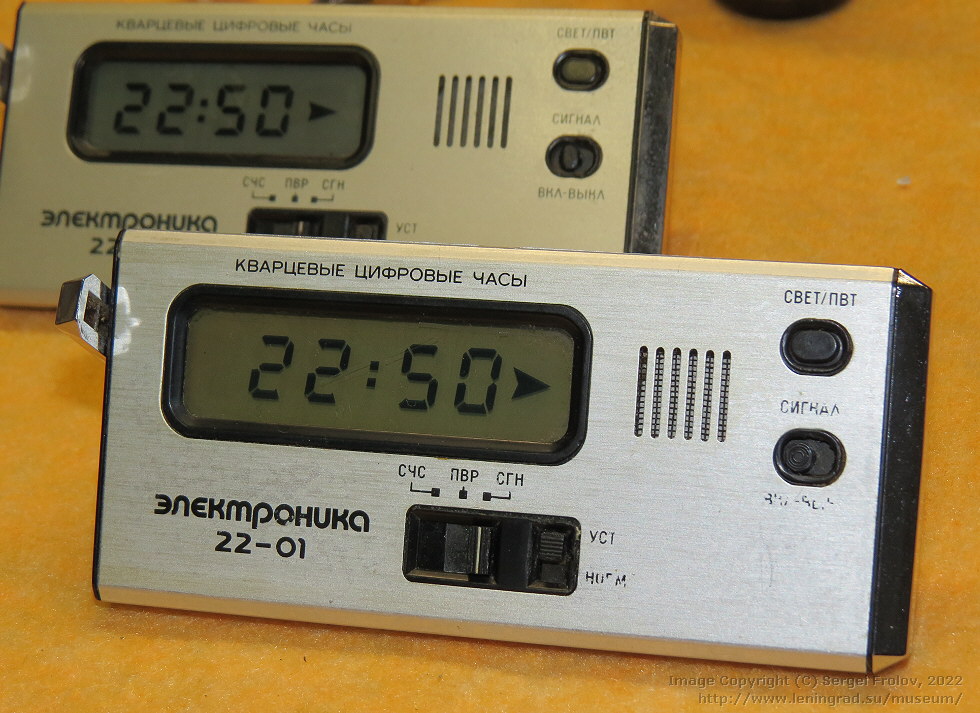
The clock I described above comes from the rather declining years of its production, so this is the second version of the device, using an automotive comparison after the so-called facelift. The differences between the two were minor, originally the display was slightly larger and the bulb illuminating it was placed at the left edge, after the changes it was placed more or less in the middle, near the top edge of the LCD. In addition, the older version lacked a plastic flap over the battery socket, and in order to replace it, you had to open the entire case. A much bigger difference was encountered inside, but about that later.
What does the interior hide?
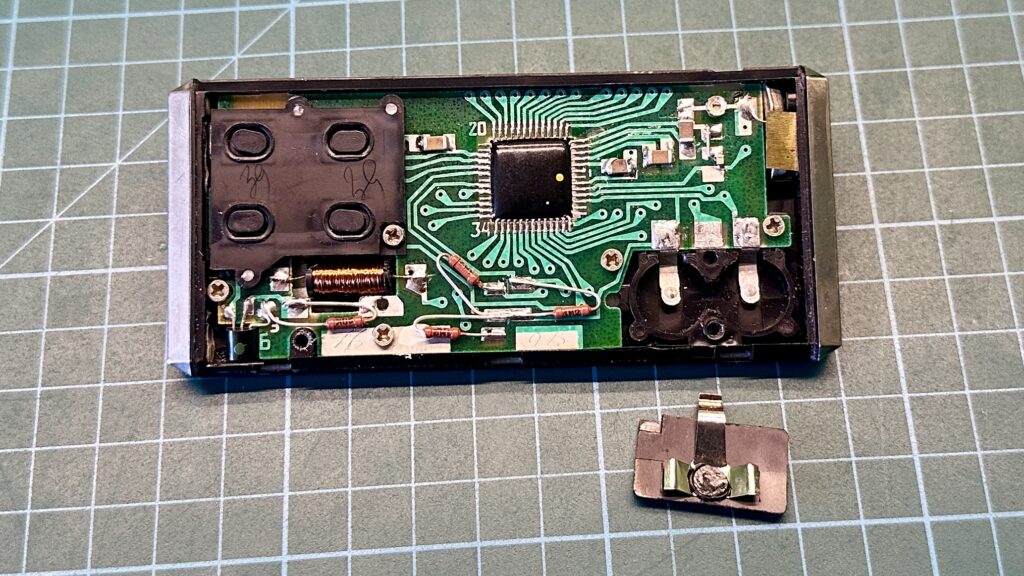
Getting inside the clock, is not a very difficult operation. After removing the case, we can see the motherboard occupying practically all the available space. Here we see a place for two flat batteries and a panel with buttons connected to the PCB. There are not many electronic components, the central place is taken by the brain of the whole device, i.e. the КФ1007ИЕ1 chip placed in a rather non-standard casing, the plastic-drenched core resembles the so-called Chinese glutes, although in this solution all the leads are placed outside, so the chip can be desoldered. Besides, we can notice several ceramic capacitors placed in the quartz resonator circuit. At the bottom edge we found several resistors, a choke and a single transistor.
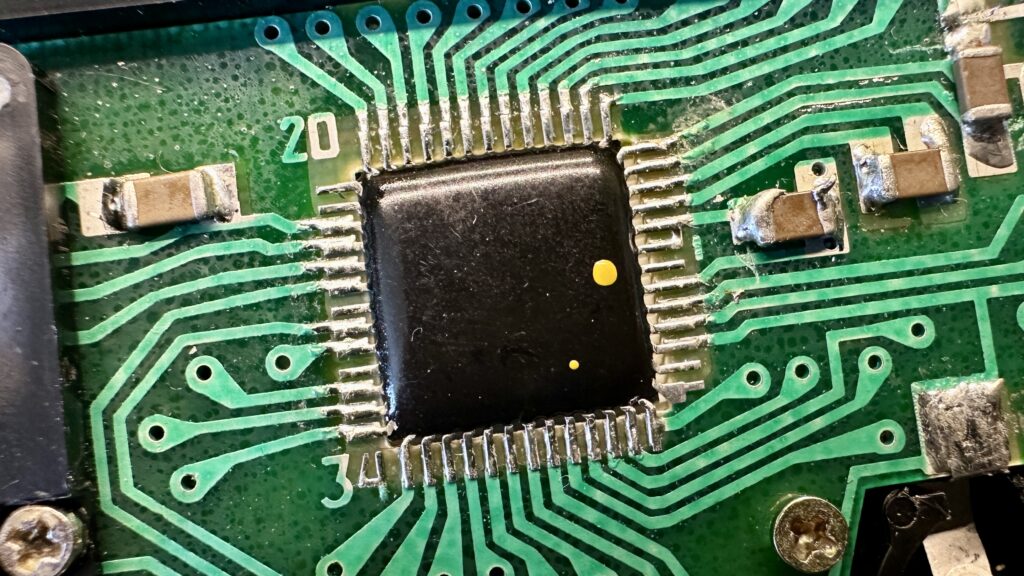
The КФ1007ИЕ1 chip is an integrated clock circuit, most likely used only in the Электроника 22-01 clock. It was manufactured at the Novosibirsk Semiconductor Equipment Factory based on the Japanese uPD833G. The very history of the creation of this chip is also interesting. Rumor has it that once upon a time, a train was stopped at a Novosibirsk railroad station, where illegal smuggling of electronic devices from China to Sweden was discovered. Among them were clocks, which customs officials handed over to a semiconductor equipment factory. The plant’s director A. Brykin, after familiarizing himself with their construction, called a meeting and asked how quickly the design team could develop a functional chip based on the one from the smuggled clock. At the time, the standard design time for the chip was two years, but Mikhail Leonidovich volunteered to do it faster. The chip КФ1007ИЕ1 appeared after six months, and as a reward for fulfilling his task Leonidovich was given an out-of-order mixing assignment.
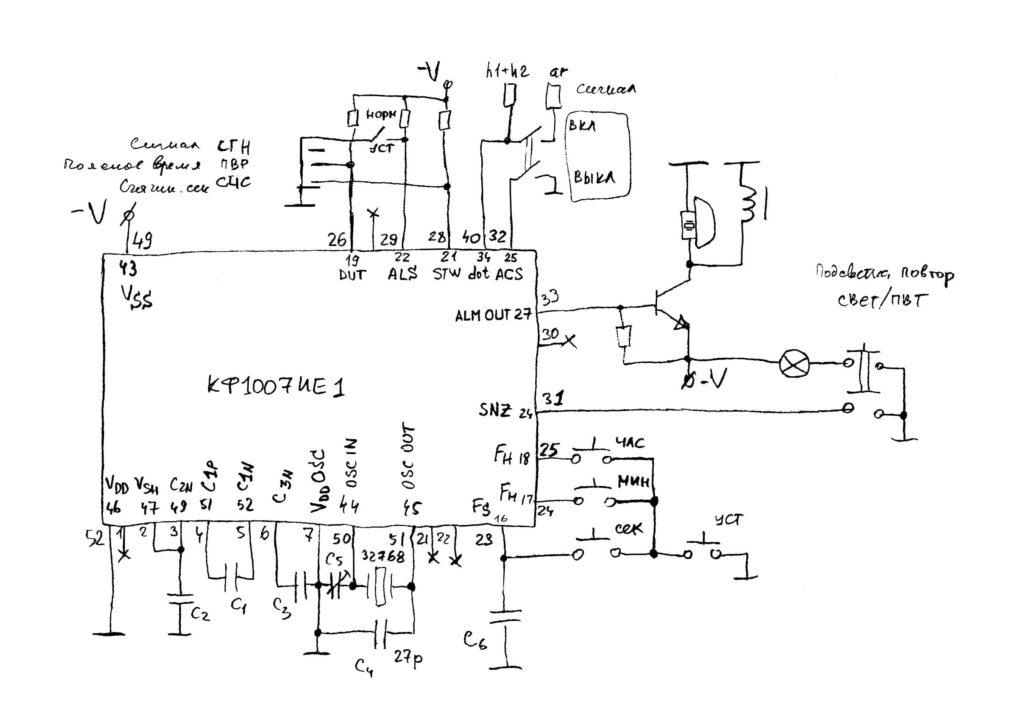
The socialist design did not need much to operate. In the diagram above you can see an application diagram that corresponds to the construction of a travel clock.
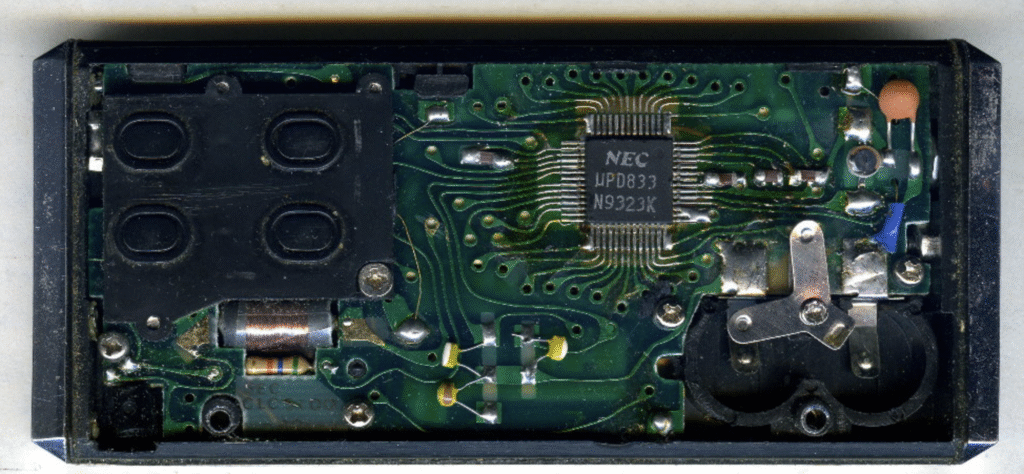
As I mentioned, the prototype of the Soviet chip was the uPD833 produced by Japan’s NEC. Interestingly, on the Internet you can find such a photo deceptively resembling the interior of our today’s hero. It is quite likely that this is an early model of the clock that used a Western chip, but it could also be another Western-made clock. From what I’ve been able to find, there was also something like the Italian-made C-500, a clock almost identical to the Электроника 22-01.

However, let’s return to the inside of the Soviet design. After unscrewing the motherboard, we can see its other side. Here we find a display connected to the laminate with conductive rubber bands, a buzzer generating an alarm clock sound and a quartz resonator. Here we can also notice the somewhat worn fields on which the sliding switches are placed.
Attempting to launch
This clock arrived to me in an unknown condition. Therefore, the first step was to check the battery socket, these curiously were in place, but judging by their condition, no one had changed them for many years. Unfortunately, identical energy carriers I did not have, so I decided to solder two wires and power the device directly from the laboratory power supply. At the first startup there were some signs of life, basically the clock did not work, but there were times when the display showed digits for a fraction of a second, what’s more, its backlight also worked. My first diagnosis was some kind of power supply problem, perhaps one of the connections on the board succumbed to the pressure of time and lost its properties.
After correcting all available solders and connections, I restarted the device, but the effect was still the same. By chance, however, I noticed that at certain points the display works a little longer, this allowed me to discover that by squeezing the clock case on the left side, it starts to work properly. However, after releasing it, everything returns to the starting point. Suspecting a failing conductive rubber band connecting the LCD to the laminate, I started the clock, holding it so that the display worked, and set the time. When I let go of the whole thing, and pressed again, the time was still set, leading me to conclude that the device is functioning properly, and the problem lies only in the connection to the LCD.
I thought for a long time whether to try to fix it, but in the end I decided to pawn everything off, as is. The display rubber bands seem to be glued together, and at least a gentle attempt to pry them off has no effect. I’m afraid that after separating them, reassembling them or replacing them with something else would no longer be possible. I therefore leave the clock in its original condition.
Sources:
- http://www.leningrad.su/museum/show_big.php?n=3716
- https://sfrolov.livejournal.com/224312.html
- http://www.155la3.ru/k1007.htm
- http://forum.watch.ru/showthread.php?t=81708
- https://www.youtube.com/watch?v=8CPJdrVKqsw
